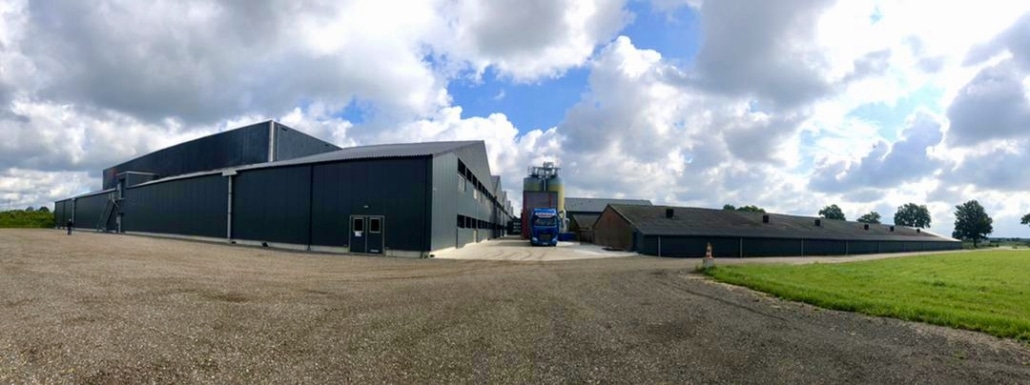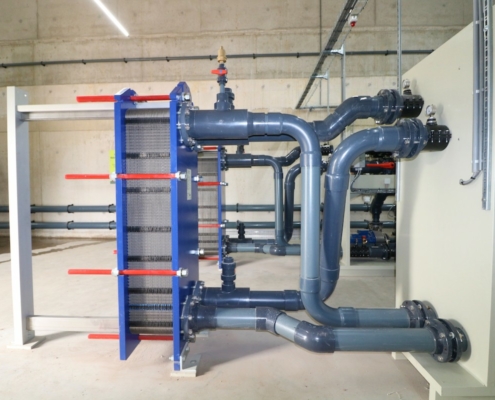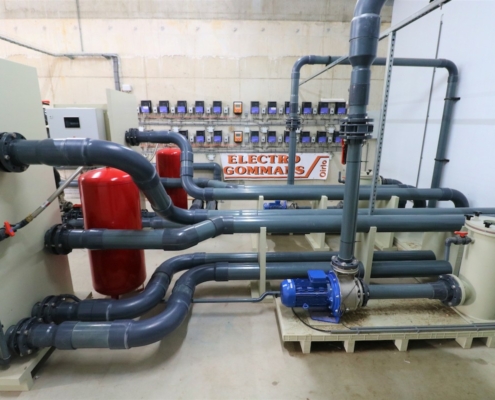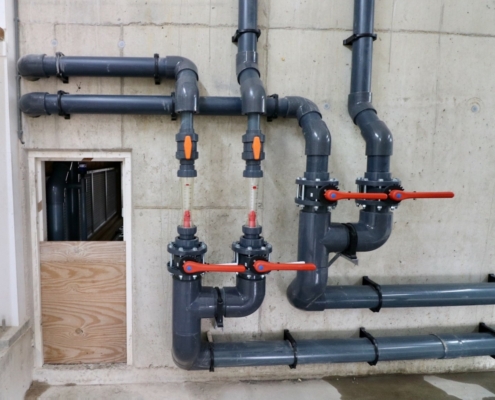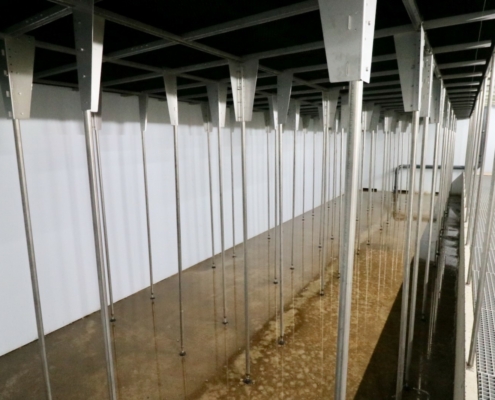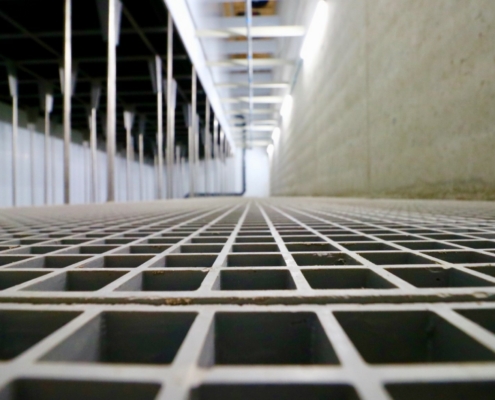Houbensteyn group works with Inno+ to build world-class pig house with optimum climate
Houbensteyn Group has built a multi-storey pig house in Grubbenvorst (NL) for 19,000 pigs. The pig house is heated, but not using gas.
New Mixed Farm
The barn will house 19,000 fattening pigs, located on two floors. The new building is part of the New Mixed Farm in the Witveldweg agricultural development area, located in the municipality of Horst aan de Maas. The Houbensteyn Group says it has built ‘an innovative livestock house with world-class climate solutions and great attention to animal welfare and the environment.’
By Dutch standards it is, at the very least, a livestock house at the top end of the scale. A few figures: it has 27,000 square metres of floor space. The construction required 2,400 lorries of concrete (excluding prefabricated parts) and the floor contains 61.2 kilometres of heating/cooling pipe.
Constant house climate
In addition to years of litigation, the construction work was also preceded by years of preparation. Extensive consideration was given to the climate in the barn. The aim is for the pigs to be kept all year round in a space where the climate is as close as possible to the optimum. This not only pertains to the temperature but also the humidity and CO2 content. According to initiator Martin Houben, this leads to improved growth, lower feed conversion, and healthier pigs, i.e. less use of antibiotics.
Optimum house climate
The Inno+ ‘Triple EEE’ system ensures an optimum house climate. For these projects, Inno+ works closely with installation company Versleijen Oirlo. A unique feature of the triple EEE technology is heat recovery from the outgoing house air. This works as follows. An air scrubber is installed at every corner of the house. The outgoing ventilation air heats the scrub water to around 18 °C. This occurs continuously, because pigs give off heat all the time. Through use of a plate-type heat exchanger, the heat is extracted from the scrub water and transferred to the water circuit that heats up the incoming air. According to the calculations, this will ensure that the temperature of the fresh air entering the house is never less than 8 °C, even during the winter. Therefore, according to the designers, draught among the pigs is almost impossible. A maximum of one third of the incoming air is preheated. According to the designers, this is sufficient to guarantee that the incoming air is always 8 °C or higher. With this system we create an optimum climate for the pigs in the house.
High humidity in the pig houses
In the summer, the incoming air is cooled by mist cooling, a method that is widely used in the poultry sector. Sprinklers spray water into the incoming house air. This reduces the temperature of the air in the section by 2 to 3 °C. Ideally, the incoming ventilation air is never warmer than 18 °C in the summer. This will not always be possible, especially when the outside air is hot, with high humidity. Under these conditions, the incoming air cannot absorb much additional moisture, so the cooling effect is reduced.
An optimum house climate without natural gas
Houben does not have anything against supplemental heating but wants it to be done in the smartest way possible, and therefore without gas. That also reduces the risk of fire. The installed heat recovery capacity to heat the incoming house air is 2.3 megawatts. This is equivalent to the heating capacity of 150 CH boilers in typical homes. Heat recovery from an air scrubber is by far the most efficient source. In this form of heat production, just 1 kW of electricity is required to move 80 kW of heat within the house.
Heat pump
A heat pump has been installed to create an optimum climate in the pig houses. This heat pump for the pens heats the floor under the youngest animals. At the same time, it cools down the solid floor under the heavier pigs, so there are always comfortable places to lie in the houses. On balance, heavy pigs provide much more heat than is needed to heat the floor under the piglets. This excess energy is used to heat water for cleaning the house and preparation of warm feed. Heating with a heat pump consumes 1 kW of power to generate up to 4 kW of heat.
Ventilation 60 cubic metres per pig per hour
If there were no heating in the house, when new pigs arrived during the winter the ventilation level would have to be lowered to such an extent that high concentrations of CO2, moisture, and ammonia would be produced. In the case of newly arrived pigs, an average of 5.5 cubic metres per animal per hour is ventilated. The maximum ventilation in the summer is 60 cubic metres per pig per hour. A good house climate leads to better technical results. Maurice Ortmans, director of Inno+, tells us, ‘On the one hand, these systems can save a lot of money. The key to success, however, is animal health. Thanks to an optimum climate in the pig houses, the animals perform much more consistently and better all year round. You can make a lot of money with that.’


